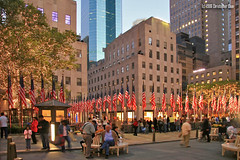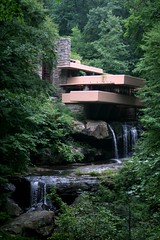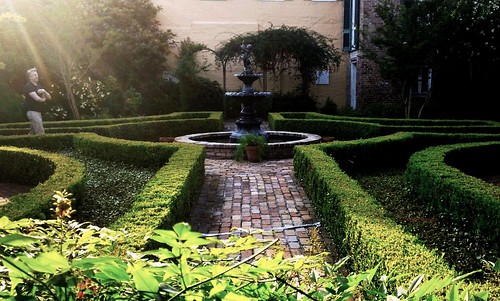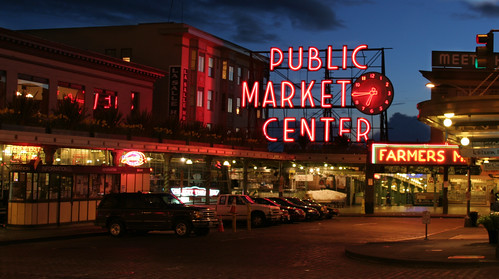Why lovable places matter to sustainability

Posted February 14, 2012 at 1:26PM
Yesterday I presented a gallery of places that inspire romance – places that kindle love, if you will. But I submit that they are also lovable themselves. Is that important? Should those of us who care about sustainability also care whether a place is “lovable”? Shouldn’t we only care about the resources it consumes and the pollution it generates?
I grappled with a related question almost three years ago, in an article titled, in part, “Does beauty matter?” I answered my own question with a tentative yes, but I’ll confess to being made restless in my conviction by the whole “but it’s in the eye of the beholder” thing. If we can’t reach consensus on a definition, then how do we know when we have it?
I’ll grant that lovability – or beauty – can be elusive to define, especially over time. For people, being what we now consider overweight and unattractive was once considered a desirable indicator of wealth. I’m told that lots of people hated Victorian architecture before they started loving it.
 But being elusive to define with certainty is not the same thing as being unimportant. While there may not be unanimity, there are in fact places that are pretty darn close to being universally loved. And they are the ones most likely to be defended and cared for over time, and thus the most sustainable in a very literal way. We need more of them.
But being elusive to define with certainty is not the same thing as being unimportant. While there may not be unanimity, there are in fact places that are pretty darn close to being universally loved. And they are the ones most likely to be defended and cared for over time, and thus the most sustainable in a very literal way. We need more of them.
I think I’ve always felt this intuitively, but I wasn’t able to articulate it until I came across the work of an architect and thinker who now is also my friend. Steve Mouzon, whose photography I featured yesterday, is unabashed in his declaration of why lovable buildings and places matter:
“Any serious conversation about sustainable buildings must begin with the issue of Lovability. If a building cannot be loved, then it is likely to be demolished and carted off to the landfill in only a generation or two. All of the embodied energy of its materials is lost (if they are not recycled.) And all of the future energy savings are lost, too. Buildings continue to be demolished for no other reason except that they cannot be loved.”
Steve prefers to link sustainability with “lovable” rather than “beautiful,” because he acknowledges that there is a cold sort of beauty that can be hard to love, and ultimately it is lovability that will lead to the care and retention of buildings. I’m adding “places” to buildings, but I am confident that Steve would agree with my addition. (His writings on the issue have focused on buildings because of concerns he has with the way they are evaluated in green rating systems.)
Steve also believes that, while lovability cannot be precisely defined, there are elements one can draw from classicism that can “stack the deck in our favor” when creating new buildings: time-honored proportions such as the golden mean. I would add that places that are in close harmony with nature compose another set of cards with which to stack the deck (to extend the metaphor, which as a writer I’m not entirely sure is a good idea).
He begins to approach the influence of nature in one of his more intriguing ideas, that “harmony with the region” may be an indicator of what may be lovable:
“Simply put, we might love a little clapboard cottage in Beaufort and a stone farmhouse in Tuscany, but putting that clapboard cottage on a Tuscan hillside would look absolutely ridiculous.
“I suspect that much of the mystery of lovable buildings may be embedded somewhere in the harmony with the region. I don’t understand it now, but it’s one of my top priorities, because we really need to figure this out.”
 In the region where I grew up, the North Carolina mountains, there is a lot of stone and natural wood in some of the architecture. That is immensely harmonious with the region, in my opinion. I would also invoke the architecture of Frank Lloyd Wright here: Wright is unpopular with urbanists because he favored a spread-out sort of aesthetic. I get that, but when you see one of his Prairie School buildings with strong horizontal lines and roofs actually on the flat prairie, it makes sense to me. Similarly, Fallingwater, perhaps his best known residence, fits incredibly well into its natural setting, cascading architecture above cascading waterfalls. His architecture has a lot of fans – and a lot of staying power – for a reason.
In the region where I grew up, the North Carolina mountains, there is a lot of stone and natural wood in some of the architecture. That is immensely harmonious with the region, in my opinion. I would also invoke the architecture of Frank Lloyd Wright here: Wright is unpopular with urbanists because he favored a spread-out sort of aesthetic. I get that, but when you see one of his Prairie School buildings with strong horizontal lines and roofs actually on the flat prairie, it makes sense to me. Similarly, Fallingwater, perhaps his best known residence, fits incredibly well into its natural setting, cascading architecture above cascading waterfalls. His architecture has a lot of fans – and a lot of staying power – for a reason.
Basically, I agree with Steve that we don’t fully understand what makes a place (or a building) lovable. And I would add that mimicking a place that is lovable may not always be a safe answer. But I also agree that the topic is very important. In what possible definition of “sustainability” can a place fit if it is not literally sustained? In order to sustain something, we need to care. And we don’t have enough people who will care just because the consumption or pollution numbers argue that they should. We are so much better positioned if they, and we, can also do so out of love.
Move your cursor over the images for credit information.
Please also visit NRDC’s Sustainable Communities Video Channel.

